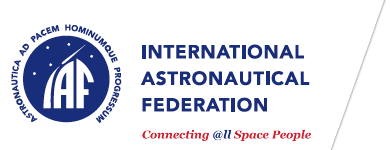Technical programme
IAC-10 — 61st International Astronautical Congress
D1. SPACE SYSTEMS SYMPOSIUM
Innovative Space Systems for Future and Current Missions and Applications.
- Coordinator
Tibor S. Balint
Jet Propulsion Laboratory — United StatesMarco Guglielmi
European Space Agency (ESA) — The Netherlands
D1.1. Innovative and Visionary Space Systems Concepts
Dreams of yesterday are a reality today. Dreams of tomorrow need to be looked at today to make them real in the future. With emerging new technologies, it is now possible to conceptualise new and innovative space systems and new potential applications for the future. This session will explore innovative technologies, services, software and concepts for space systems for the future.
- Chairman
Mauricio Moshe Guelman
Asher Space Research Institute, Technion, I.I.T. — IsraelRobert L. Henderson
The Johns Hopkins University Applied Physics Laboratory — United States
- Rapporteur
Peter Dieleman
Netherlands Aerospace Centre (NLR) — The Netherlands
D1.2. Enabling Technologies for Space Systems
This session will focus on innovative, technological developments that are usually high risk, but which have the potential to significantly enhance the performance of existing and new space systems. Enabling innovative technologies for space applications often result from “spin-ins” which will be discussed during the session, together with potential spin-offs. Examples include instrumentation, biotechnology, components, micro- and nano-technology, MEMS, advanced new structures and software techniques.
- Chairman
Xavier Roser
Thales Alenia Space France — FranceJean-Paul Aguttes
Centre National d'Etudes Spatiales (CNES) — France
- Rapporteur
Anne Bondiou-Clergerie
GIFAS — France
D1.3. System Engineering Tools, Processes & Training (I)
This session will focus on state-of-the-art system engineering methodologies, design techniques, tools, processes, and training that reduce the time and cost, and improve the quality of space system design. Of special interest are multi-disciplinary methods, tools, and processes including modelling and simulation used to define system architectures to improve risk management, safety, reliability, testability, quality of life cycle cost estimates, and to improve the training of system engineers.
- Chairman
Ming Li
China Academy of Space Technology (CAST) — ChinaGeilson Loureiro
Instituto Nacional de Pesquisas Espaciais (INPE) — Brazil
- Rapporteur
Xavier Roser
Thales Alenia Space France — France
D1.4. Space Systems Architectures
The subject of this session is current and future space system architectures to increase performance, efficiency, reliability, and flexibility of application. Topics of interest include the design of flight and ground system (hardware & software) architectures and the partitioning of functions between them, small satellite constellations and formations (swarms), and the use of on-board autonomy and autonomous ground operations.
- Chairman
Geilson Loureiro
Instituto Nacional de Pesquisas Espaciais (INPE) — BrazilPeter Dieleman
Netherlands Aerospace Centre (NLR) — The Netherlands
- Rapporteur
Franck Durand-Carrier
Centre National d'Etudes Spatiales (CNES) — France
D1.5. Lessons Learned in Space Systems
Experiences, both positive and negative, that have been encountered in space systems (hardware & software) design, development and operation. End-to-end lessons learned and impacts on cost, schedule and performance, in the areas of (among others): international cooperation, the use of COTS products, partitioning of functions between flight and ground systems, the extent and fidelity of simulations, integration, test and operations.
- Chairman
Anne Bondiou-Clergerie
GIFAS — FranceKlaus Schilling
Zentrum für Telematik — Germany
- Rapporteur
Takashi Hamazaki
Japan Aerospace Exploration Agency (JAXA) — Japan
D1.6. System Engineering Tools, Prcesses and Training (2)
This session will focus on state-of-the-art system engineering methodologies, design techniques, tools, processes, and training that reduce the time and cost, and improve the quality of space system design. Of special interest are multi-disciplinary methods, tools, and processes including modelling and simulation used to define system architectures to improve risk management, safety, reliability, testability, quality of life cycle cost estimates, and to improve the training of system engineers.
- Chairman
Klaus Schilling
Zentrum für Telematik — GermanyTakashi Hamazaki
Japan Aerospace Exploration Agency (JAXA) — Japan
- Rapporteur
Reinhold Bertrand
European Space Agency (ESA) — Germany
